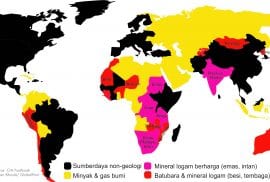Coal Combustion Solid Waste, pucuk dicinta ulam pun tiba.
Pile of coal combustion ash at one of the Thermal Power Plant in West Sumatra (Source: documentation of F. Anggara)
The national energy policy sets the primary energy mix target in Indonesia in 2025 with the composition


